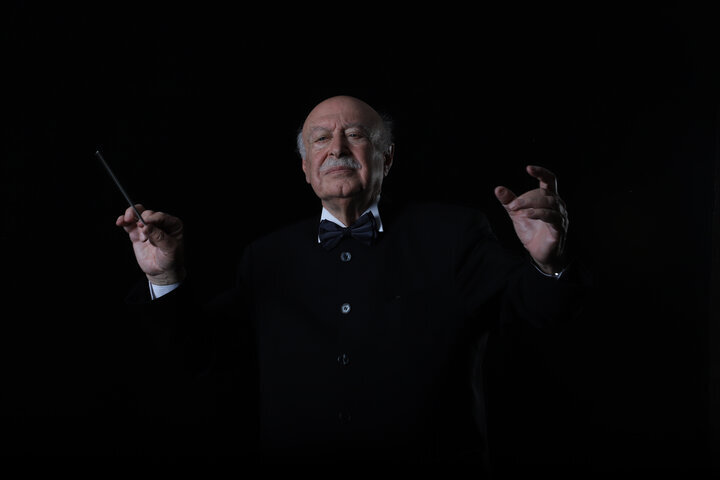Maestro Farhad Fakhreddini to conduct “Simorgh” concert after ten-year hiatus

TEHRAN- The latest work of veteran Iranian composer and conductor Farhad Fakhreddini, titled “Simorgh,” will premiere on November 20 at Tehran’s Vahdat Hall, marking Fakhreddini’s return to the stage after a decade away.
Fakhreddini's composition, inspired by "The Conference of the Birds", a timeless masterpiece by Persian poet Attar Neyshaburi, is structured in five movements and will be performed by an orchestra comprising approximately 100 renowned musicians from Iran’s classical music scene, Mehr reported on Tuesday.
Born in 1938 in Tabriz, East Azarbaijan, Fakhreddini is a distinguished Iranian composer and conductor, recognized as the founder of Iran's National Orchestra. He directed Iran’s Radio and Television Orchestra from 1973 until 1979. Fakhreddini has also composed music inspired by the poetry of notable Iranian poet Fereydoon Moshiri.
In recognition of his contributions to Iranian culture, he received the 1st Class Order of Culture and Art from the Iranian government in June 2005. In July 2008, a commemorative stamp was released in his honor. Fakhreddini stepped down from his role with Iran's National Orchestra in July 2009. He is also celebrated for his film and TV series scores, including music for "Avicenna," "Imam Ali (AS)," "Once Upon a Time," and "The English Briefcase,” showcasing his influence and legacy in Iranian music.
“The Conference of the Birds,” also known as “Mantaq al-Tayr,” is a celebrated Persian poem written by the 12th-century Sufi mystic and philosopher Farid ud-Din Attar. This allegorical masterpiece is considered one of the pivotal works in Persian literature and Sufi thought. Composed in rhymed couplets, it narrates the profound journey of a group of birds in search of their mythical king, Simorgh, a name that translates to "thirty birds," embodying both the concept of unity and the divine.
The story opens with the birds discussing their dissatisfaction with their current lives under the oppressive rule of the tyrannical Hoopoe. Motivated by a longing for spiritual enlightenment and purpose, they convene a conference to decide to embark on a quest to find Simorgh, their ultimate king. Each bird represents different human traits and dilemmas, illustrating various philosophical perspectives on existence, spirituality, and the path to self-realization.
As the birds undertake their arduous journey, they encounter various challenges and obstacles, each of which serves as a metaphor for the inner trials faced on the path to enlightenment. The birds must cross seven valleys, each symbolizing the stages of spiritual growth: the Valley of Quest, the Valley of Love, the Valley of Knowledge, the Valley of Detachment, the Valley of Unity, the Valley of Wonderment, and finally, the Valley of Poverty and Annihilation. Each valley demands the birds to shed their material attachments and ego, refining their spirits in pursuit of the divine truth.
Ultimately, the birds discover that Simorgh is not a distant king but a reflection of themselves. The revelation emphasizes the Sufi concept that the divine is found within and that true enlightenment comes from self-discovery and unity with the universe. “The Conference of the Birds” continues to resonate with readers today, inspiring countless adaptations and interpretations, and solidifying Attar’s legacy as a seminal figure in Persian literature and Sufi mysticism.
SAB/
